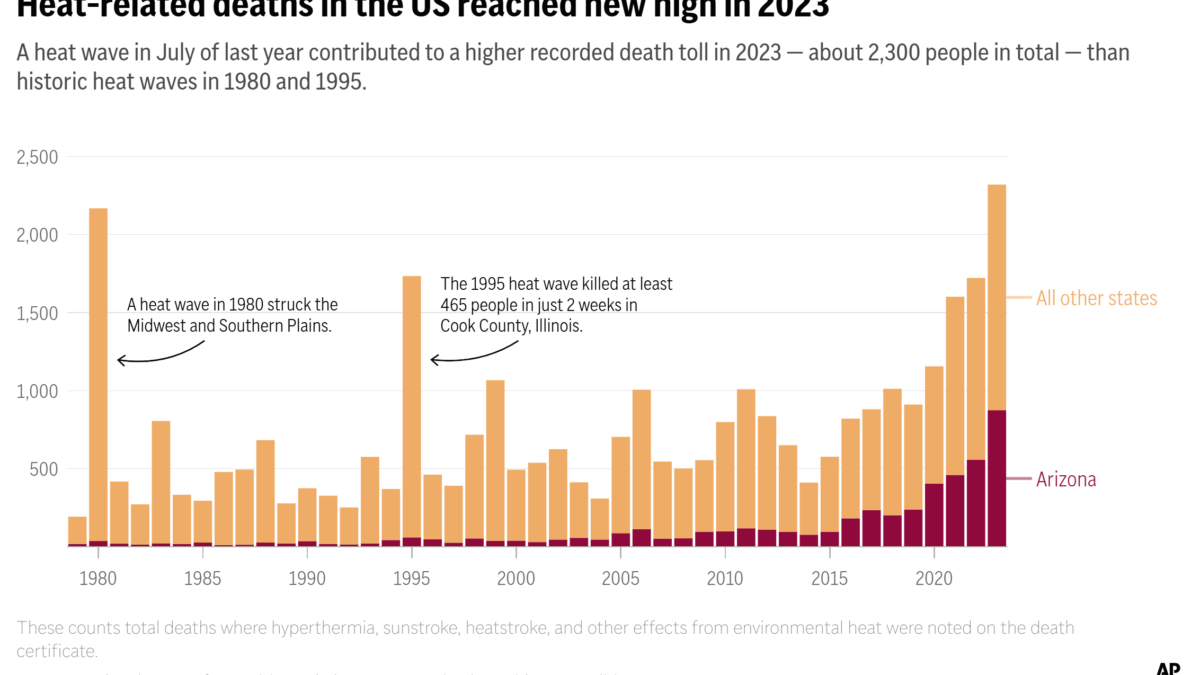E-waste is overflowing landfills, rising five times faster than formal recycling – At one sprawling Vietnam market, workers recycle some of it – “We are currently generating e-waste at an unprecedented rate”

By Aniruddha Ghosal and Jae C. Hong
2 May 2024
HO CHI MINH CITY, Vietnam (AP) – Dam Chan Nguyen saves dead and dying computers.
When he first started working two decades ago in Nhat Tao market, Ho Chi Minh City’s biggest informal recycling market, he usually salvaged computers with bulky monitors and heavy processors. Now he works mostly with laptops and the occasional MacBook.
But the central tenet of his work hasn’t changed: Nothing goes to waste. What can be fixed is fixed. What can be salvaged gets re-used elsewhere. What’s left is sold as scrap.
“We utilize everything possible,” he said.

The shop he works at is one of many in a market that spreads across several streets filled with haggling customers. Most repair shops are a single room crammed with junked electronic devices or e-waste with tables placed outside. Workers, many of them migrants from across Vietnam, repair or salvage items like laptops, scarred mobile phones, camera lenses, television remotes, even entire air conditioning units. Other shops sell brand-new electronics alongside old, refurbished items.
The bustle is emblematic of a world that is producing more e-waste than ever — 62 million metric tons in 2022, projected to grow to 82 million metric tons by 2030, according to a report by the United Nation’s International Telecommunications Union and research arm UNITAR. Asian countries generate almost half of it.
“We are currently generating e-waste at an unprecedented rate,” said Garam Bel, e-waste officer at the U.N.’s International Telecommunication Union.

Managing that waste is crucial. It’s filling up landfills at an alarming pace and dangerous chemicals like lead leak into the environment and harm human health. It also means missing out on recoverable resources — $62 billion worth in 2022, according to the U.N. report.
And that waste is rising five times faster than formal recycling.
Less than a quarter of electronic waste was properly collected and recycled in 2022. Some of the rest winds up in the hands of informal waste workers, like Nguyen, in different parts of the world. That’s especially the case in Southeast Asian nations where, the UN report found, none of the electronic waste is formally collected or recycled.

Nguyen, 44, is one of three employees in the shop. His long years in the business have led to relationships with regular customers, including some other computer repair centers who rely on him for tricky jobs. It requires keeping up with changing trends and technology, so he’s constantly learning via friends and the internet.
He works 11 hours a day for a monthly salary of around $470 — about 2 1/2 times the minimum wage in Vietnam’s biggest and most expensive city — with quick meals as his only breaks.
It’s demanding work that doesn’t come with health benefits or a retirement plan. Nguyen’s health is OK, but he worries about potentially dangerous chemicals in the electronic devices he dismantles without protective gear.

Then there’s Ho Chi Minh City’s increasing extreme heat. The little shop can feel like an oven, particularly in summer.
“Sitting here can feel like death,” he said. “I just have to endure. I must work to make a living.” […]
Copper, gold, silver, and even some tiny amounts of rare earth minerals — necessary for smartphones, computer displays and LED light bulbs — can be recovered from recycling. Only about 1% of the demand for 17 of those key minerals is met through recycling, according to the U.N. report. Bel, of the U.N.’s International Telecommunication Union, said he had no data on how much of those minerals are recovered via informal recycling. [more]
E-waste is overflowing landfills. At one sprawling Vietnam market, workers recycle some of it

